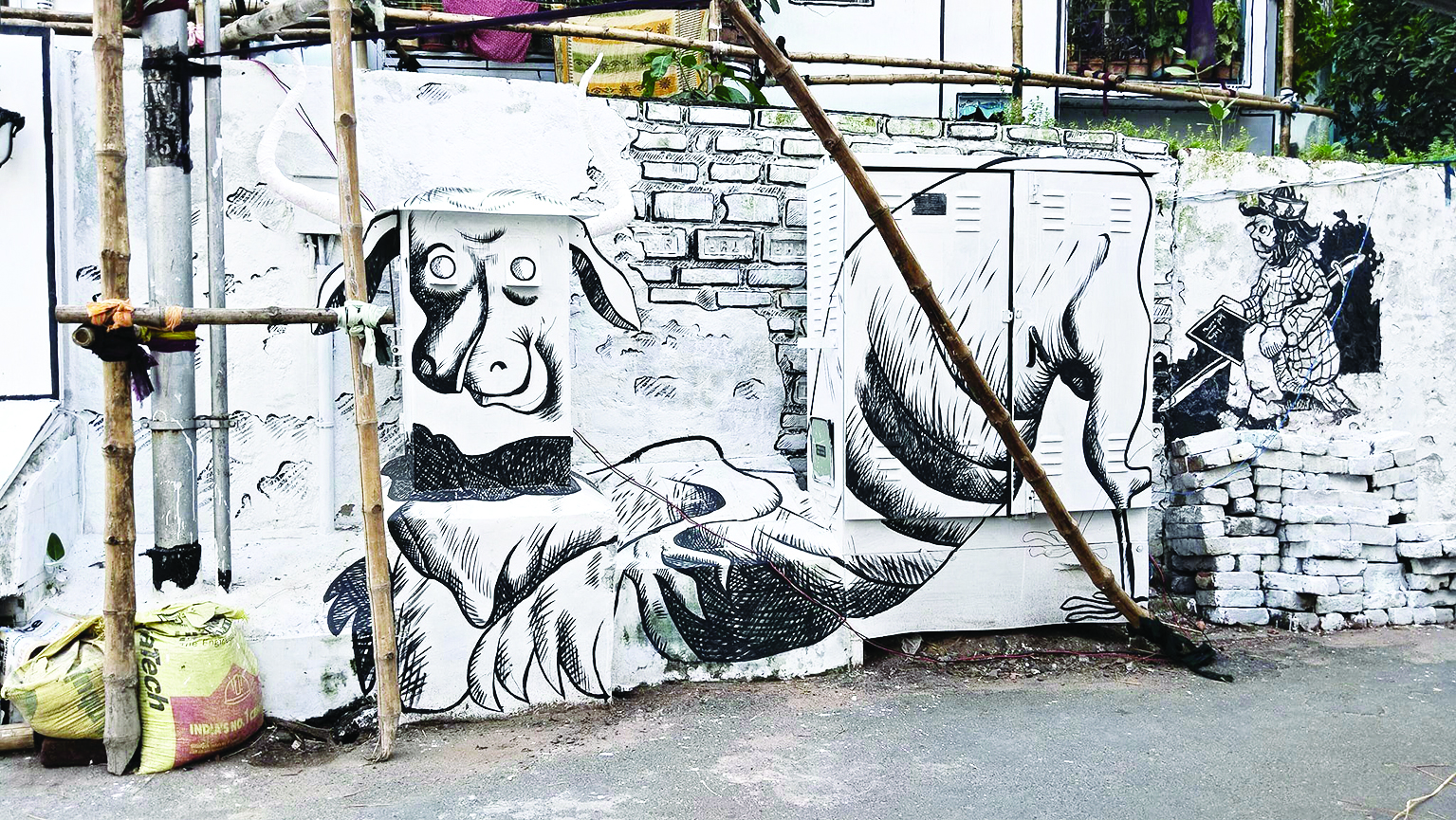Freedom struggle to class division, Abol Tabol, varied themes this Puja

KOLKATA: While growing up, it’s hard to find a Bengali who didn’t want to dive into the magical world of Kumro Potash, Gangaram, Hnukumukho Hyangla, and Katukutu Buro.
This Durga Puja, Hatibagan Nabin Pally is set to bring those childhood characters to life through the 100th-anniversary celebration of Sukumar Ray’s ‘Abol Tabol’. Ray used the art of nonsense literature to convey powerful social and political messages, showing the profound impact of humour and absurdity on our understanding of the world.
In our 90th year of celebrating Puja, the entire neighbourhood, stretching from Bidhan Sarani to Hatibagan, has been beautifully painted in white and black. What’s even more interesting is that many of the neighbourhood walls have paintings of the loved characters from ‘Abol Tabol.’ Artist Anirban Das is the brain behind the theme.
“The book of nonsense has been a timeless treasure for Bengali children across generations. ‘Abol Tabol’ is not just for kids but also holds a special place in the hearts of adults. Our aim was to create a world where one could interact with these much-loved characters,” he said. Dum Dum Tarun Dal’s Durga Puja theme is a tribute to history and the freedom struggle. With artist Pradip Das leading the way, this North Kolkata Puja committee is highlighting the often-forgotten stories of women freedom fighters who fought for India’s independence from the British.
Their theme, ‘Kalbela,’ features Pritilata Waddedar, Bina Das, Kalpana Dutta, and others, as well as Netaji Subhas Chandra Bose’s contributions to India’s freedom movement and The Great Escape. Recently, Commissioner of Police (CP), Bidhannagar, Gaurav Sharma and other senior officials visited the pandal to supervise the arrangements. In South Kolkata, the excitement of pandal hopping isn’t complete without a visit to Chetla Agrani Club, a Puja patronised by Kolkata Mayor and minister Firhad Hakim. This year, artist Subrata Bandopadhyay has chosen a theme, ‘Je Jekhane Dariye,’ which vividly portrays the class divisions and social struggles that persist in our society.



